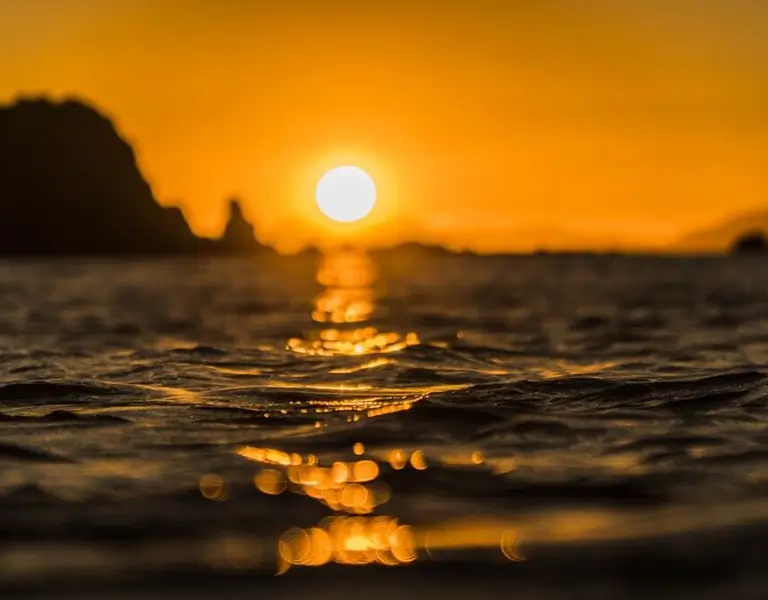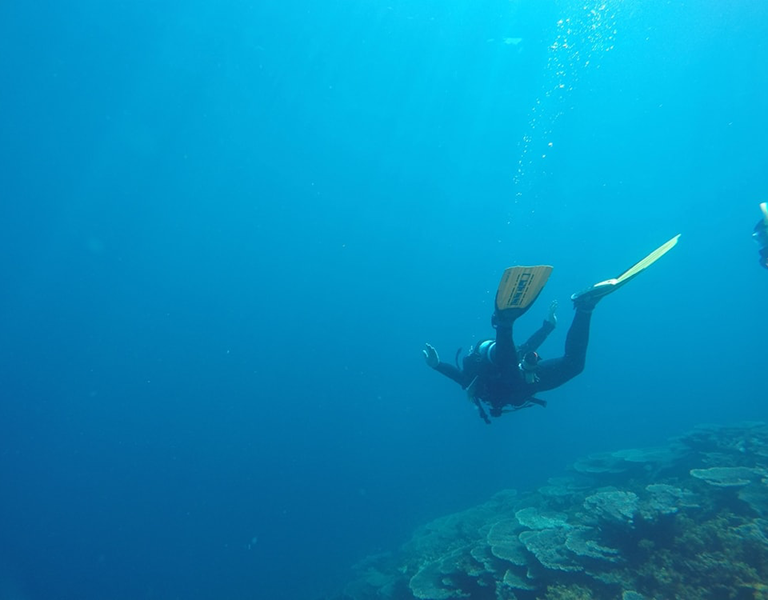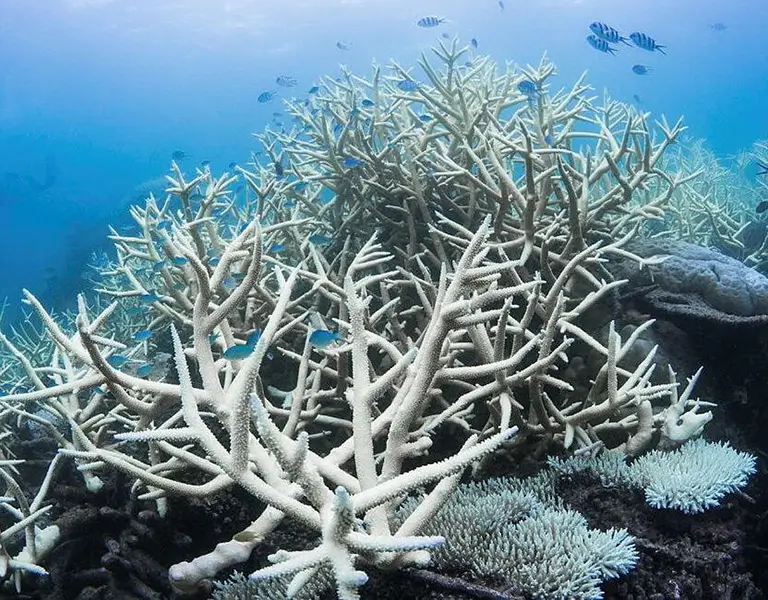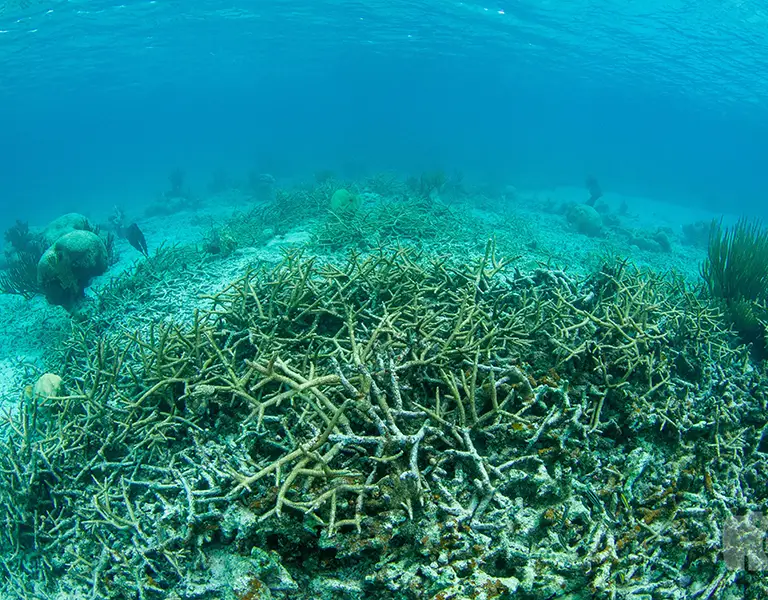Key Takeaways
- Coral reefs are among the world’s most diverse ecosystems, covering less than 1% of the ocean floor yet supporting approximately 25% of all marine species and providing crucial resources for up to one billion people globally.
- They are incredibly valuable, generating an estimated $2.7 trillion annually by powering tourism economies, protecting coastlines from storms, sustaining fisheries, providing medicinal compounds, and more.
- Two main types of coral exist—hard corals (which build reef structures with calcium carbonate skeletons) and soft corals (which have flexible bodies supported by tiny skeletal elements)—each playing unique ecological roles.
- Coral reefs form distinct structural formations including fringing reefs (along coastlines), barrier reefs (separated from shore by lagoons), atolls (circular formations), and patch reefs (isolated structures), each adapted to specific environmental conditions.
- Climate change, ocean acidification, pollution, overfishing, and direct human impacts threaten coral reef survival worldwide, with over 50% of reefs already dead and over 90% of remaining reefs at risk of severe degradation by mid-century.
- Conservation and regeneration efforts including marine protected areas, innovative restoration techniques, and climate action offer hope for coral reef ecosystems, with organizations like Coral Vita pioneering advanced models to grow resilient corals at accelerated rates at scale.
In the crystalline waters of our world’s oceans, one of nature’s most extraordinary achievements quietly thrives: the coral reef. These living monuments represent some of the most diverse ecosystems on our planet – vibrant underwater cities that pulse with life and color. Yet for all their beauty and resilience, coral reefs face unprecedented threats in our changing world.
The story of coral reefs is one of astounding diversity, complex relationships, and profound importance to our planet’s health. Understanding the different types of coral and coral reef structures helps us appreciate what’s at stake as we work to protect these underwater treasures.
According to the National Oceanic and Atmospheric Administration (NOAA), “coral reefs are some of the most diverse ecosystems in the world” with thousands of species relying on reefs for survival and millions of people depending on them for food, protection, and livelihoods [1].
The Building Blocks: Understanding Types of Coral
At the heart of every coral reef is a remarkable partnership. What we call “coral” is actually a symbiotic relationship between tiny marine animals and microscopic algae. The animal component – coral polyps – are soft-bodied organisms related to sea anemones and jellyfish, complete with stinging cells for defense and food capture. Within the coral’s tissue live a symbiotic algae. In exchange for protection and a home, the algae provides extra food through photosynthesis to the coral, which it then uses to build its calcium carbonate skeleton. Part animal, part plant, part rock.
Most corals form colonies of hundreds to thousands of individual polyps, though some species remain solitary throughout their lives. These coral polyps are the architects of the reef, working ceaselessly to construct the physical framework that supports an astounding array of marine life.
Soft Corals vs. Hard Corals: Two Fundamental Types
The coral world divides broadly into two main groups: soft corals and hard corals. This distinction represents one of the most fundamental ways to categorize types of coral. NOAA’s Coral Reef Information System (CoRIS) provides extensive resources documenting these coral classifications and their distinctive characteristics [2].
Hard Corals: The Reef Builders

Hard corals, also known as stony corals or scleractinian corals, are the primary reef-building organisms. What distinguishes these corals is their ability to extract calcium carbonate from seawater to construct rigid skeletons. These calcium carbonate skeletons form the structural foundation of coral reefs, creating complex three-dimensional habitats that support countless marine species.
Hard corals typically feature polyps with six tentacles, though this isn’t always visible to the casual observer. The outer layer of living tissue covers a hard skeleton that grows as the colony expands. These reef-building corals, sometimes called hermatypic corals, host symbiotic algae called zooxanthellae within their tissues, which provide nutrients through photosynthesis.
Some notable types of hard corals include:
- Brain coral: Named for their resemblance to the human brain, these massive, rounded corals feature intricate maze-like patterns on their surface. Brain coral colonies can live for centuries, growing slowly but steadily in tropical waters.
- Staghorn coral (Acropora cervicornis): With branches that resemble a deer’s antlers, these fast-growing corals once dominated Caribbean reefs. Their complex branches provide essential habitat for numerous fish species.
- Table coral: These corals grow in flat, table-like formations that can spread several meters across. Commonly found in the Indo-Pacific region, they maximize their exposure to sunlight.
Pillar coral: Growing in finger-like or columnar formations that can reach several feet in height, these corals create vertical structures on the reef.
Soft Corals: Flexible Beauty
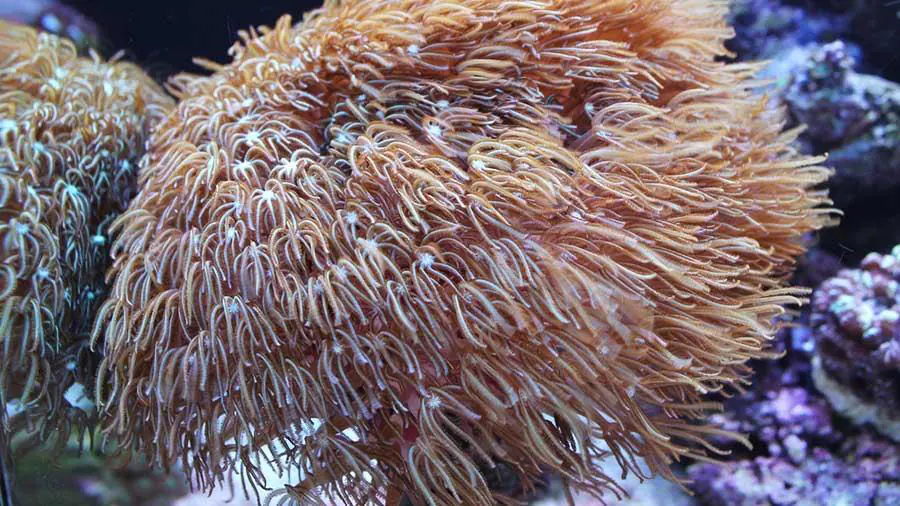
Unlike their rigid cousins, soft corals lack the hard calcium carbonate skeletons that characterize reef-building species. Instead, they contain small, calcified elements called sclerites embedded in their tissues, providing some structure while maintaining flexibility.
Soft coral polyps typically have eight tentacles, distinguishing them from hard corals. These tentacles are often feathery or pinnate in appearance, creating a delicate, flowing aesthetic that sways with ocean currents. Without rigid skeletons, soft corals rely on hydraulic pressure within their bodies to maintain their shape.
Common types of soft corals include:
- Sea fans: These elegant coral colonies grow in flat, fan-shaped patterns oriented perpendicular to prevailing currents to maximize feeding opportunities.
- Sea whips: Growing in long, slender formations, these soft corals can reach considerable heights and often form in areas with strong currents.
- Tree corals: Branching in tree-like patterns, these soft corals create vertical structures that add complexity to reef environments.
- Leather corals: These soft corals have a smooth, leathery appearance and often form lobed or folded structures on the reef.
Other Coral Categories
While the hard/soft distinction represents the primary division among coral types, several other coral-like organisms contribute to reef ecosystems:
- Fire coral: Despite their name, fire corals aren’t true corals but are more closely related to jellyfish and hydroids. They’re named for their powerful sting, which can feel like a burn to humans who brush against them.
- Black corals: These deep-water specialists typically grow in tree-like formations and are valued for jewelry. Despite their name, living black corals often appear white, yellow, or green due to their living tissue covering the black skeletal structure.
- Lace corals: These delicate hydrozoans form lace-like patterns and can be found in many reef environments.
Historical coral types that are now extinct include rugose corals and tabulate corals. These ancient corals flourished in the oceans of the Paleozoic era but disappeared during the mass extinction event at the end of the Permian period. Modern corals evolved independently and differ structurally from these ancient predecessors.
Coral Growth: How Reefs Form and Expand
Coral growth occurs through both sexual and asexual reproduction methods. Most species can reproduce through both approaches, which contributes to their resilience and adaptability.
Sexual Reproduction in Corals
Many coral species engage in mass spawning events, often triggered by lunar cycles and water temperature. During these remarkable events, corals release eggs and sperm into the water column, creating a snowstorm-like effect underwater. Fertilized eggs develop into larvae called planulae, which drift with currents before settling on suitable substrate to begin new colonies.
Asexual Reproduction in Corals
Corals also reproduce asexually through:
- Budding: New polyps grow from the base or side of existing polyps
- Fragmentation: Broken pieces of coral can reattach and develop into new colonies
- Fission: A single polyp divides into two or more new polyps
This ability to reproduce asexually allows corals to recover from damage and expand their colonies relatively quickly under favorable conditions. It also enables corals to propagate in areas where sexual reproduction might be challenging.
The rate of coral growth varies dramatically among species and environments. Some fast-growing branching corals may extend by 10-20 centimeters per year, while massive brain corals might grow less than 1 centimeter annually. This slow growth makes many coral reefs particularly vulnerable to damage, as recovery can take decades or even centuries.
Types of Coral Reef: Major Structural Classifications
Beyond the types of coral themselves, coral reefs form distinct structural patterns based on their relationship to land masses and the ocean floor. The science of reef morphology recognizes several primary types of coral reef structures. The Great Barrier Reef Marine Park Authority provides comprehensive educational resources about these different reef formations and their ecological significance [3].
Fringing Reefs: The Coastal Guardians
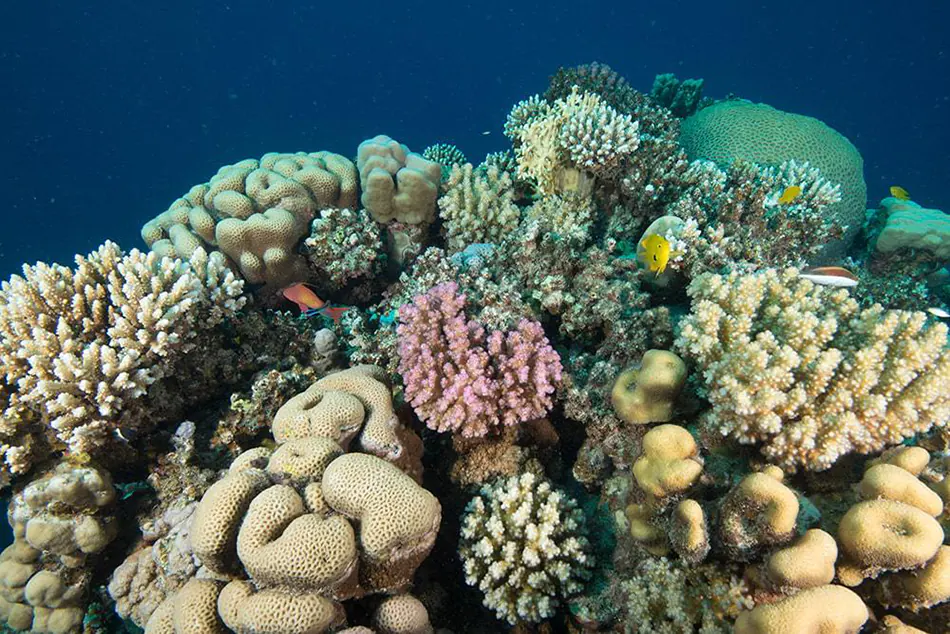
Fringing reefs grow directly from or close to the shoreline of continental landmasses or islands. These reef systems typically lack significant lagoons or deep channels between the reef and the shore. As the most common type of coral reef, fringing reefs serve as critical buffers, protecting coastlines from wave action and storms.
Notable examples of fringing reefs include those along the coastlines of the Red Sea, parts of Hawaii, and portions of the Florida Keys. These reefs often follow the contours of the shoreline and are particularly vulnerable to coastal development, runoff, and human activity.
Barrier Reefs: Nature’s Breakwaters
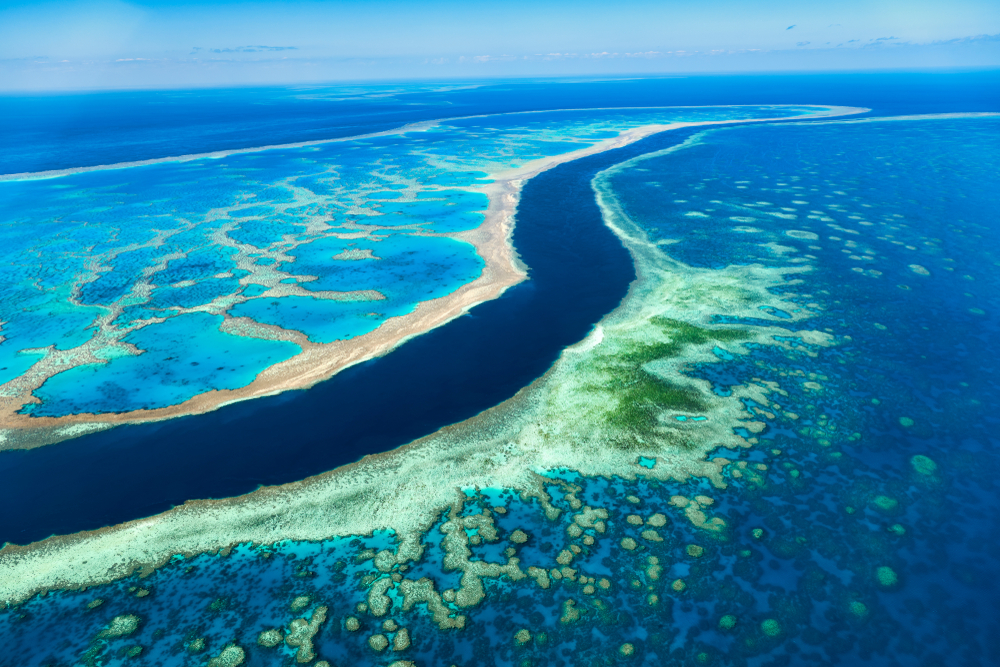
Barrier reefs run roughly parallel to shorelines but are separated from land by deeper, wider lagoons. These impressive structures typically develop further offshore along continental shelves. The most famous example, Australia’s Great Barrier Reef, stretches over 2,300 kilometers, forming the largest coral reef system on Earth. Other notable ones include the Andros Barrier Reef in The Bahamas and the Mesoamerican Reef in Central America.
Barrier reefs create protected, calm-water environments in their lagoons, providing critical habitat for countless marine species while protecting coastlines from the full force of ocean waves. They typically develop when fringing reefs continue to grow upward as land subsides or sea level rises. According to the Great Barrier Reef Marine Park, these reef systems are under pressure from climate change, coastal development, land-based runoff, and illegal fishing, making their conservation a global priority [4].
Atolls: Rings of Life
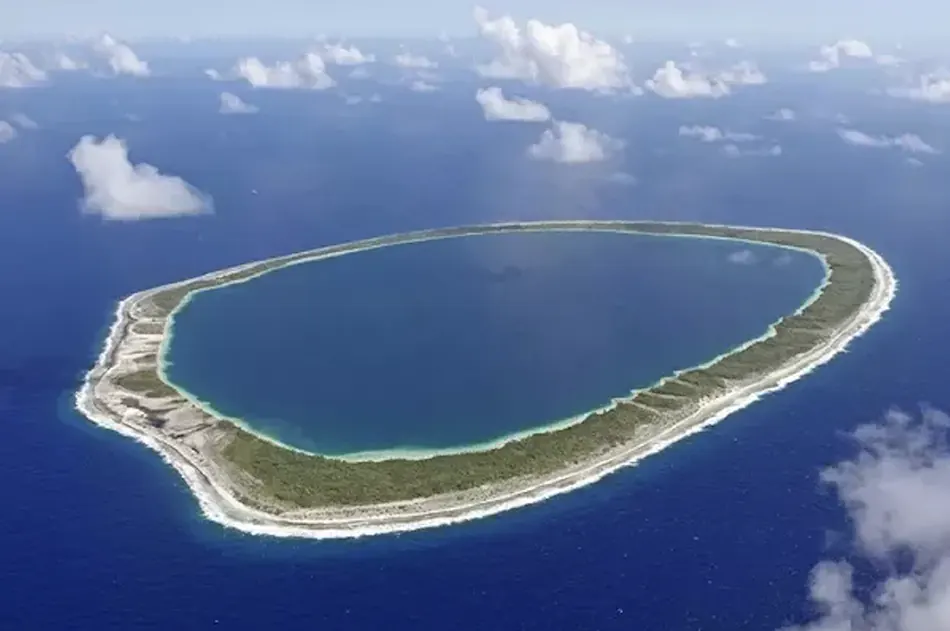
Perhaps the most visually striking reef formations, atolls are circular or oval rings of coral that enclose a central lagoon. These formations typically arise when reefs develop around volcanic islands that subsequently subside below sea level, leaving only the coral ring visible above the water’s surface.
This process, first described by Charles Darwin, can take millions of years as coral growth keeps pace with the slowly sinking volcanic island. The result is a ring of coral surrounding a central lagoon where the island once stood. The Maldives, Tuamotu Archipelago, and Marshall Islands feature spectacular examples of atoll formations.
Patch Reefs: Coral Islands
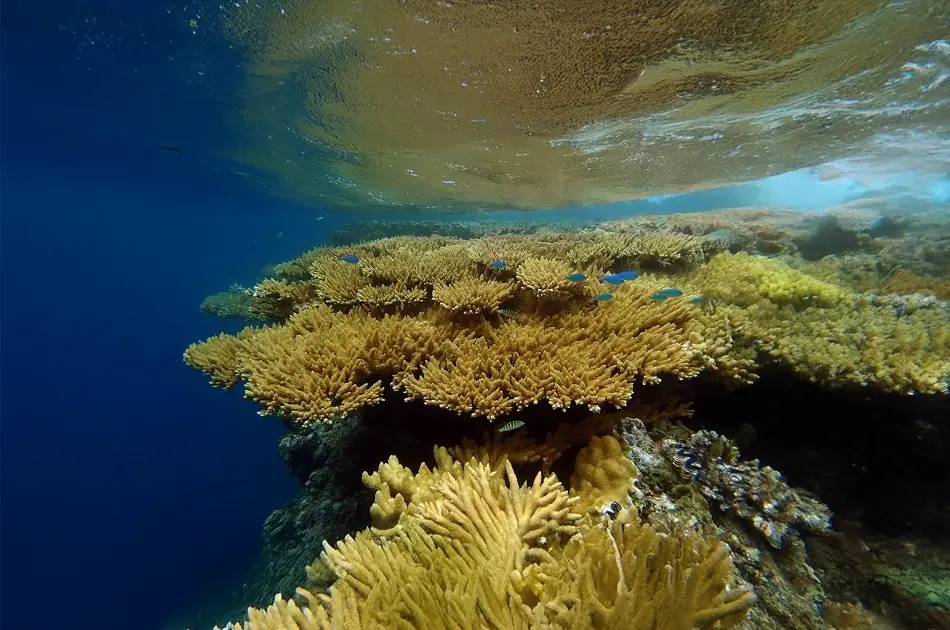
Patch reefs are smaller, isolated reef formations that develop on the continental shelf or within the lagoons created by barrier reefs or atolls. These discrete coral growths range from just a few meters to several hundred meters in diameter and often appear as “patches” of reef separated from other reef structures.
These smaller reef formations provide important stepping stones between larger reef systems and contribute significantly to overall marine biodiversity. Their isolated nature sometimes allows for the development of unique ecological communities.
Platform Reefs: Tabletop Structures
Platform reefs, also called bank reefs, develop on the continental shelf or other shallow ocean floor features far from coastlines. These reefs grow upward from the ocean floor, sometimes reaching close to the water’s surface, and typically feature relatively flat tops with steep sides.
The Great Barrier Reef includes numerous platform reefs among its 2,900+ individual reef structures, demonstrating how different reef types often coexist within larger reef systems.
Coral Species Diversity: A Kaleidoscope of Life
The diversity of coral species worldwide is astounding, with over 850 species of reef-building corals identified so far. Each species has adapted to particular environmental conditions, creating specialized niches within the broader reef ecosystem.
Geographic Distribution of Coral Species
Coral reefs are generally found in tropical and subtropical waters between 30°N and 30°S latitudes. However, the distribution of coral species varies significantly across the world’s oceans:
- Indo-Pacific Region: This area hosts the greatest coral diversity, with the “Coral Triangle” (encompassing Indonesia, Malaysia, Papua New Guinea, Philippines, Solomon Islands, and Timor-Leste) serving as the global epicenter of coral biodiversity.
- Caribbean and Western Atlantic: While hosting fewer species than the Indo-Pacific, this region features many endemic species found nowhere else on Earth.
- Red Sea: This body of water contains corals that have adapted to higher salinity and temperature variations than most other reef-building species.
- Western Indian Ocean is another famous region
- Deep Water Corals: Some coral species have adapted to life in deeper, colder waters, creating important habitats along continental shelves worldwide. These deep-water corals don’t rely on photosynthetic algae and can survive at depths where sunlight doesn’t penetrate.
Specialized Coral Adaptations
Corals have evolved remarkable adaptations to thrive in their specific environments:
- Light adaptation: Different coral species can adjust their growth forms to optimize light exposure, with some developing flat surfaces to maximize photosynthesis.
- Current adaptation: Corals in high-energy environments often develop more robust, compact growth forms to withstand strong waves, while those in calmer waters may grow in more delicate, branching patterns.
- Feeding strategies: While most reef-building corals rely heavily on their symbiotic relationship with photosynthetic algae, many species can also capture plankton and organic matter from the water column, especially in nutrient-rich or deeper waters.
- Reproductive timing: Coral species have evolved precise timing for their spawning events, often coordinated with lunar cycles and seasonal temperature changes to maximize reproductive success.
The Ecological Importance of Coral Reefs
Though they cover less than 1% of the ocean floor, coral reefs support approximately 25% of all marine species at some point in their life cycles. This astonishing concentration of biodiversity makes coral reefs comparable to rainforests in their ecological significance. The World Wildlife Fund (WWF) notes that coral reefs cover less than 0.1% of our ocean but are home to 25% of its wildlife and provide for an estimated 850 million people in coastal communities worldwide [5] 1.
Biodiversity Hotspots
The complex three-dimensional structure created by coral colonies provides countless microhabitats for marine life. From the tiny spaces between coral branches to the larger caves and overhangs of the reef structure, these environmental niches support specialized species adapted to particular conditions.
A healthy coral reef might host:
- Thousands of fish species
- Hundreds of coral species
- Countless invertebrates, from colorful nudibranchs to economically important lobsters and mollusks
- A diverse microbial community that plays crucial roles in nutrient cycling
Coastal Protection
Coral reefs serve as natural breakwaters, dissipating wave energy before it reaches shorelines. This protection is increasingly valuable as climate change drives sea level rises and more intense storm systems. By some estimates, coral reefs reduce wave energy by up to 97%, providing crucial protection for coastal communities worldwide.
Cultural Heritage
In many coastal communities, coral reefs not only provide food, jobs, and protection from storms. They also often form the bedrock of history and identity for countless cultures. For example, in the Kumulipo – the Hawaiian people’s creation chant – all life on Earth comes from the coral polyp.
Economic Value
The economic value of coral reefs reaches far beyond their beauty. These ecosystems:
- Support fisheries that provide protein for over 500 million people
- Drive tourism economies worth billions annually
- Provide compounds for medical research and pharmaceutical development
- Protect coastal infrastructure worth trillions of dollars globally
Threats to Coral Reef Ecosystems
Despite their importance, coral reefs face unprecedented threats from human activity and climate change.
Coral Bleaching: The Visible Crisis
Coral bleaching occurs when corals expel their symbiotic algae due to stress, most commonly from elevated water temperatures. Without these algae, corals lose their primary food source and their vibrant colors, appearing white or “bleached.” While corals can recover from mild bleaching events, prolonged or severe episodes often lead to mass coral mortality.
Global warming has dramatically increased the frequency and severity of bleaching events. The Great Barrier Reef experienced devastating mass bleaching events in 2016, 2017, 2020, and 2022 – a frequency that gives corals little time to recover between episodes. Mass global bleaching in 2023 and 2024 impact an estimated 84% of remaining coral reefs.
Ocean Acidification: The Chemical Threat
As the ocean absorb increasing amounts of carbon dioxide from the atmosphere, seawater becomes more acidic. This process, known as ocean acidification, makes it more difficult for corals and other marine organisms to build their calcium carbonate skeletons. Leading research suggests that if current trends continue, many coral reefs could shift from building to dissolving as early as mid-century.
Local Threats: Direct Human Impacts
Beyond global climate challenges, coral reefs face numerous local threats:
- Overfishing and destructive fishing practices
- Coastal development and sedimentation
- Agricultural runoff and pollution
- Physical damage from anchors, careless tourism, and boat groundings
- Invasive species introductions
- Reckless tourists and reef-harmful chemical sunscreens
Hope for Coral Reefs: Conservation and Restoration
Despite the serious challenges facing coral reefs, significant efforts are underway to protect and restore these critical ecosystems. The Coral Reef Alliance (CORAL) conducts research to identify critical threats to coral reefs and implements strategies that strengthen ecosystem connectivity, enhancing natural resilience and adaptive capacity [6].
Marine Protected Areas
Well-designed and enforced marine protected areas have proven effective in preserving coral reef health. These designated zones limit or prohibit extractive activities like fishing, allowing reef ecosystems to recover and thrive. Notable success stories include Cabo Pulmo National Park in Mexico, where fish biomass increased by over 400% within a decade of protection.
Coral Restoration Programs
Innovative restoration programs worldwide are working to rebuild damaged reefs through:
- Coral gardening and nursery cultivation
- Selective breeding for climate resilience
- Microfragmentation techniques to accelerate growth of slow-growing species
- Reef rehabilitation after ship groundings or storm damage
The National Fish and Wildlife Foundation (NFWF) manages the Coral Reef Stewardship Fund in partnership with NOAA’s Coral Reef Conservation Program, providing grants to support efforts that improve the health and resilience of coral reefs in the United States and its territories [7] 2.
Addressing Climate Change
Ultimately, the fate of coral reefs depends on our collective action to address climate change. Reducing carbon emissions is essential to prevent further ocean warming and acidification – the most severe threats to reef survival globally.
Conclusion: Our Connection to Coral Reefs
The story of coral reefs is inextricably linked to our own. These ancient ecosystems, built by tiny animals over millennia, now depend on human choices for their survival. By understanding the diversity and importance of coral reefs, we can better appreciate what’s at stake and take meaningful action to protect these underwater treasures.
As ocean explorer Sylvia Earle noted, “No water, no life. No blue, no green.” The health of our coral reefs reflects the health of our oceans, and ultimately, the health of our planet. Through informed stewardship and decisive climate action, we can help ensure these vibrant underwater cities continue to thrive for generations to come.
Whether you’re exploring the different types of coral reef in the Indian Ocean, marveling at brain coral formations in the Caribbean, or learning about the complex relationships between coral polyps and their symbiotic algae, remember that these ecosystems represent one of nature’s greatest achievements – and one of our most important conservation priorities.
For educational resources about coral reefs, visit NOAA’s Coral Reef Conservation Program [8] 3 and the Great Barrier Reef Marine Park Authority’s education portal [9] 4. To support coral reef conservation efforts, consider organizations like the Coral Reef Alliance and the World Wildlife Fund’s Coral Reef Rescue Initiative.
About Coral Vita
Coral Vita is a mission-driven company dedicated to restoring our world’s dying and damaged reefs. Using innovative land-based farming techniques, Coral Vita grows diverse and resilient corals in months instead of the decades they take in nature. These corals are then transplanted into threatened reefs, helping to preserve ocean biodiversity while protecting coastal communities that depend on healthy reefs for protection, food, and income [10].
Founded by environmental entrepreneurs Sam Teicher and Gator Halpern, Coral Vita’s high-tech coral farms incorporate breakthrough methods to restore reefs in the most effective way possible. In 2021, the company was recognized as the inaugural winner of Prince’s William’s Revive Our Oceans Earthshot Prize Winner for their pioneering work in coral restoration.
To learn more about Coral Vita’s work or to get involved in coral reef conservation efforts, visit their website at www.coralvita.co or contact them directly through their Contact Us page.
References
- World Wildlife Fund (WWF) Coral Reef Rescue Initiative: https://wwf.panda.org/discover/our_focus/oceans_practice/coral_reef_rescue/ ↩︎
- National Fish and Wildlife Foundation – Coral Reef Stewardship Fund: https://www.nfwf.org/programs/coral-reef-stewardship-fund ↩︎
- NOAA Coral Reef Education Resources: https://www.coralreef.noaa.gov/education/eduresources.html ↩︎
- GBRMPA Education: https://www2.gbrmpa.gov.au/our-work/education ↩︎


